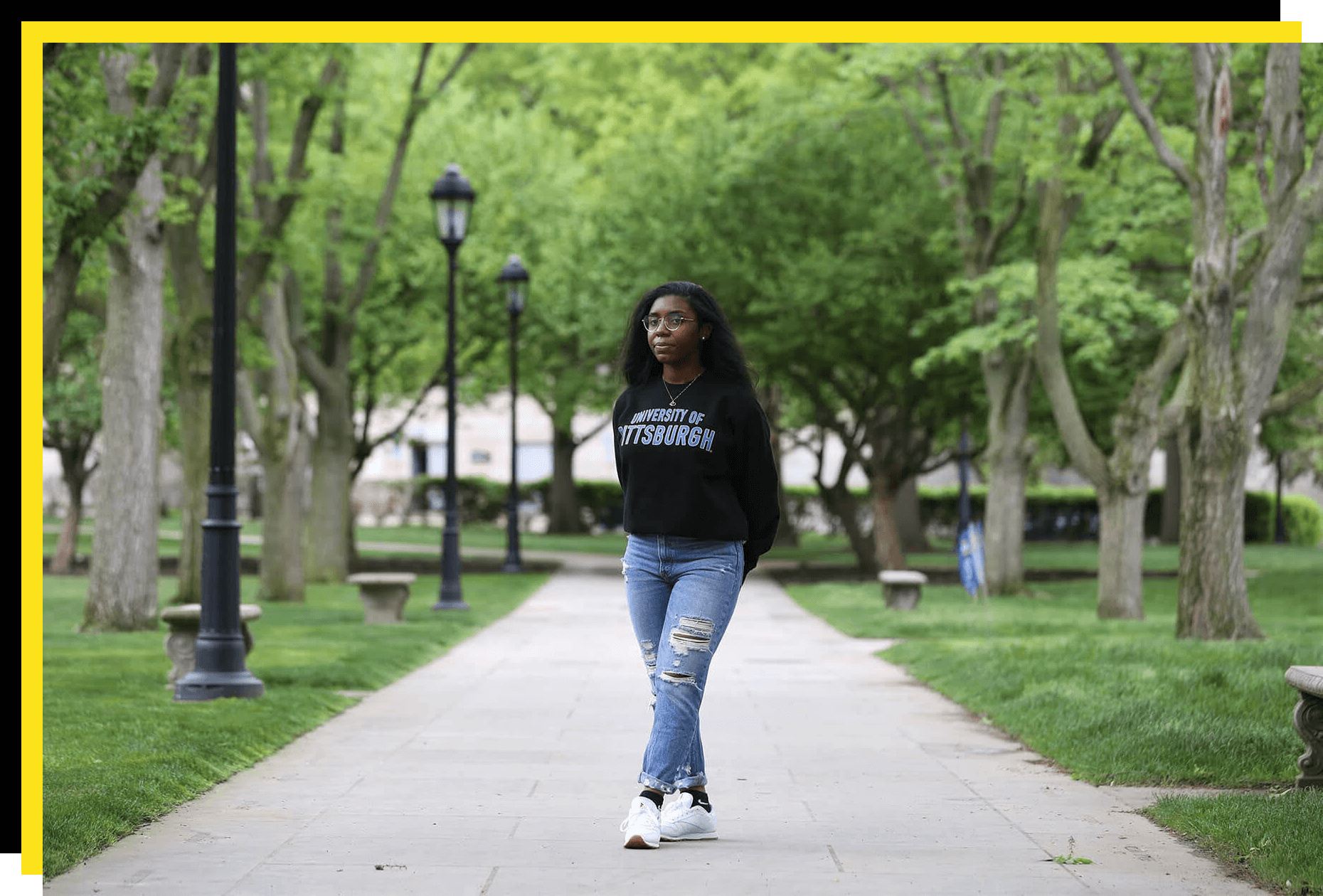
Morgan Ottley, president of the Black Action Society at the University of Pittsburgh until her May graduation. (Photo by Ryan Loew/PublicSource)
May 25, 2021

Morgan Ottley, president of the Black Action Society at the University of Pittsburgh until her May graduation. (Photo by Ryan Loew/PublicSource)
It all happened so quickly for Morgan Ottley.
She became president of a Black student organization at the University of Pittsburgh. A deadly virus forced classes online. And then there was the weight of grief.
The violent murder of Ahmaud Arbery. The brutal police killing of Breonna Taylor.
Both tragedies brought on yet another wave of fear as the reality of being Black in America meant looking over your shoulder and questioning the motives of police.
Ottley already faced an intimidating task as she prepared to lead the Black Action Society and its members through those anxieties and killings. Then the 22-year-old heard about the murder of George Floyd. Protests swept the nation.
“We can’t just do nothing as the Black student organization on campus, like we can’t just sit here and be quiet,” said Ottley, who graduated with a neuroscience degree this May.
Yet Pitt’s administration was quiet at first. With no response or reassurance from her school, she was frustrated.
“That’s kind of a slap in the face to your Black students because they’re going through something right now, and the one place that we’re supposed to call home, hasn’t said anything — that’s alarming,” she said.
Across the country, students like Ottley are passionate about change. These students, and like-minded faculty and staff, want their universities to be more inclusive and recognize racial inequities. Yet as their leadership roles put them in contact with university administrators, they also bear the burden of trying to reform the very institutions they feel have failed to hear them for years.
And as student populations diversify, faculty are lagging behind. As a consequence, university staff and faculty of color also take on more responsibilities and labor to make campuses more welcoming to marginalized students.
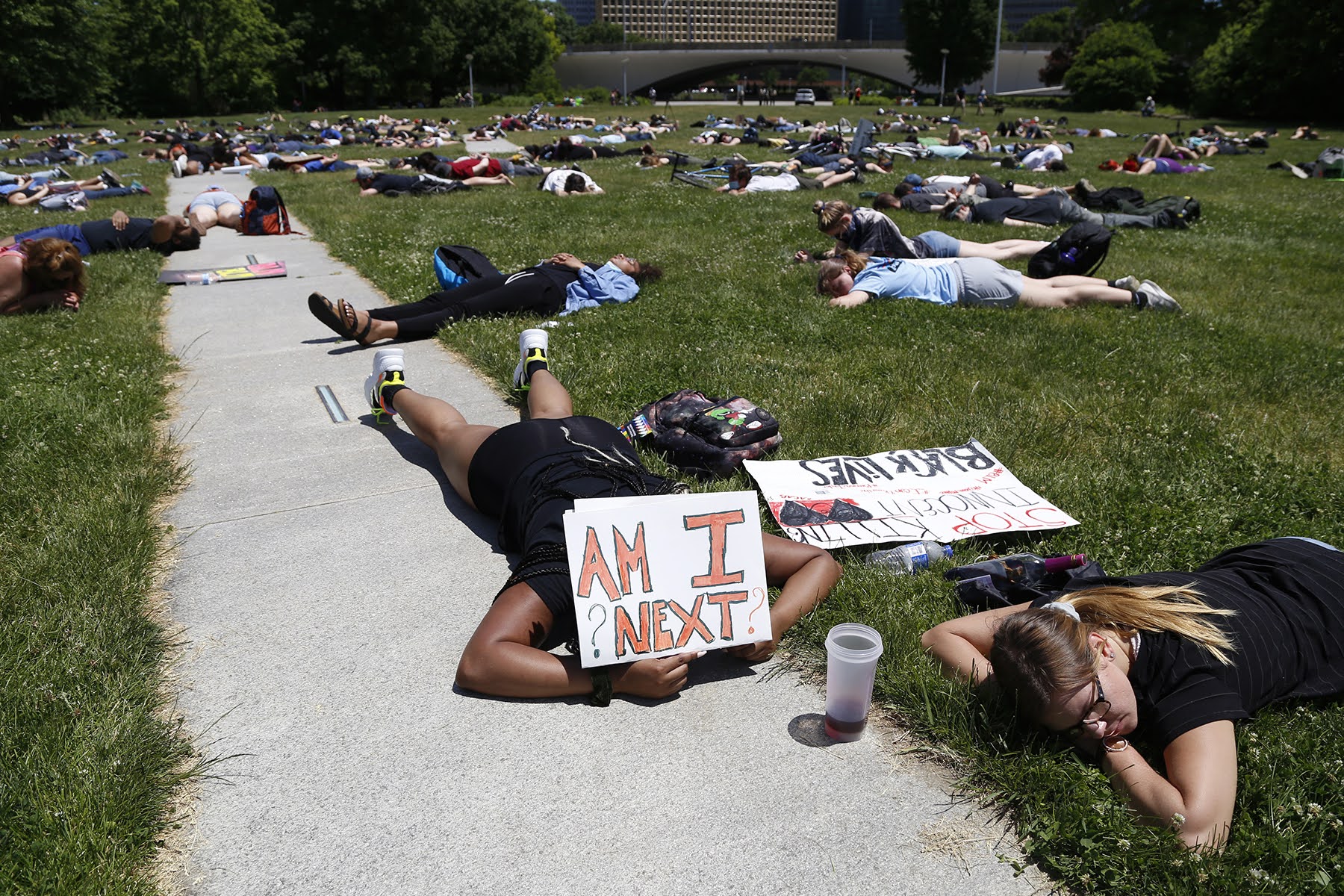
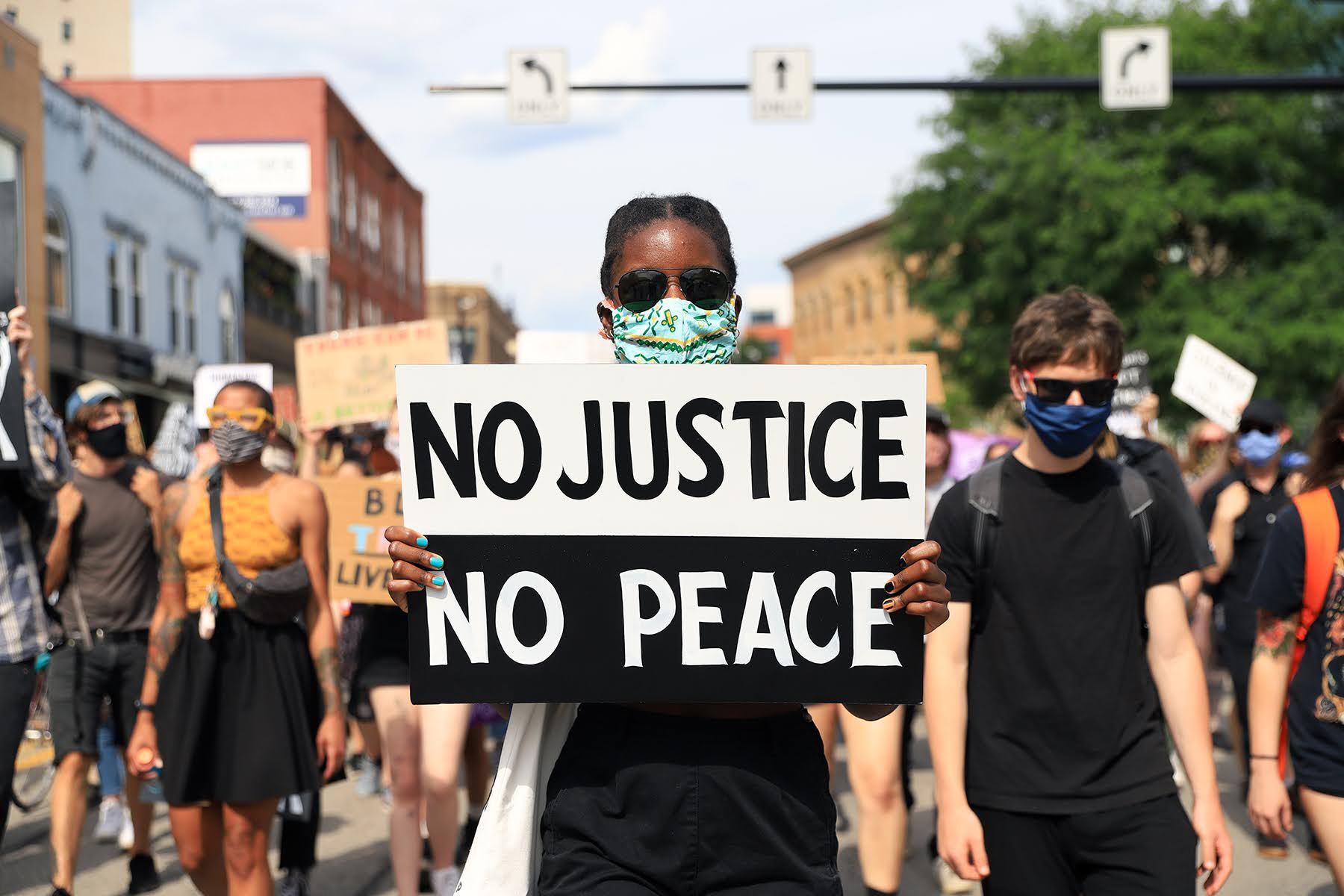
Following the murder of George Floyd at the hands of a Minneapolis police officer on May 25, 2020, demonstrations around the country called for racial justice. Here in the Pittsburgh region, protesters filled the streets for months. (Photos by Ryan Loew and Jay Manning/PublicSource)
More than a week after Floyd was killed, Pitt Chancellor Patrick Gallagher posted a statement saying the school stands in support of the Black faculty, students and staff while highlighting the injustice of Floyd’s death. “The painful truth is that persistent and systemic racism continues to fuel a deep injustice toward African Americans,” the statement said.
Ottley met with Pitt’s dean of students in early June and, through the summer and into the following school year, she dealt with meeting after meeting with university leadership to bring about a list of demands.
In the year after Floyd’s death, what has changed at Pittsburgh-based universities like Pitt, Carnegie Mellon University and Duquesne University? Professors, students and administrators reflect on how a summer of protests and ongoing outrage, pain and vulnerability have shaped campus life.
Many acknowledge positive steps but see a long road ahead to realize true progress.

Facing ongoing injustice, Ottley wanted more than just a conversation.
She realized just how isolating it could be as one of the few Black students in classes where the first Black female neurosurgeon was not mentioned and students had to ask for time off whenever another Black person was killed.
“I speak of this perpetual cycle that Black students are constantly in,” Ottley said. “The way this kind of works is that something happens. Black students complain. Administration kind of goes like, ‘Oh, we hear you. Let’s meet and let’s talk about it.’”
Black student organizations at Pitt created a list of demands, which included calls to train faculty and staff on issues like racial biases and micro-assaults, increase Black faculty by 10% over the next four years, expand mental health resources to Black students and establish scholarships for Black students in the name of Antwon Rose II, who was killed by an East Pittsburgh police officer in June 2018.
By April, Ottley said many of the demands were met, though some — like severing the ties with police and creating a scholarship fund — did not go through.
The university created an anti-racism series and resources, hosted events and workshops, required an anti-Black racism course for first-year students, expanded Black student membership of the chancellor’s public safety advisory committee and added scholarships for Black medical students.
Ottley said there is more work to be done but is heartened by the steps so far to improve experiences for Black students.
Her sentiments were echoed by Vice Chancellor and Chief Diversity Equity and Inclusion Officer Clyde Pickett. In an emailed statement, he said efforts by the university will be reflected in a new strategic plan to help improve access for students and staff.
“And it will be my job to continue to challenge the University to lead the way not only in self-reflection, but on broad actions to promote sustainable change. Being fully committed to this work requires ongoing and sustained assessment and action. There will always be areas to improve upon,” Pickett said.
Black faculty in Pittsburgh also demanded change.
At Carnegie Mellon University [CMU], two English professors co-wrote an essay in June that called out universities for not doing enough to truly fight racism, especially to better serve Black communities.
-At CMU, Black students make up 2.8% of the student population
-At Pitt, Black students make up 4.8% of the student population
-At Duquesne University, Black students make up 5.5% of the student population
-At Washington & Jefferson, Black students only make up 6.4% of the student population
(Source: Data USA)
Part of the motivation was after Richard Purcell, a tenured professor at the university for over 10 years, discovered that his edits and comments seemed to be left out of a response sent out by the dean of the Dietrich College of Humanities and Sciences.
“I was very animated during our deliberations about the statement that we actually have something with teeth and say something meaningful, or say nothing at all,” said Purcell, who felt upset that his scholarly knowledge and personal experiences were not considered.
For him, the frustration went beyond CMU to include other higher education institutions that he feels showed a lack of bravery in acknowledging the state of police violence in the country. Purcell and a colleague published an essay in The Chronicle of Higher Education pushing for universities to do more in the face of clear injustice.
“These are things that have been studied over and over and over again, whether it’s instances and percentages of Black and Brown people being killed by police — it’s not as if this is opinion,” Purcell said.
Dietrich Dean Richard Scheines at the college explained that seeing the footage of Floyd sent him back to his childhood sitting in front of the television and watching protests during the 1960s. He wanted to send out a meaningful message.
“The energy that developed around the murder was complicated and very intense — despair, anger, outrage, hope that this might finally cause a reckoning, fear, you name it,” he said in an email response to PublicSource.
Scheines said he worked with 10 faculty members involved in diversity, equity and inclusion work to come up with the college statement.
Jason England, an assistant creative writing professor who said he was not asked to help with the statement, collaborated with Purcell on the article.
“Beyond my background in civil rights, certainly my upbringing is very similar to the sort of Black people who are being harassed by police and killed on a regular basis,” England said.
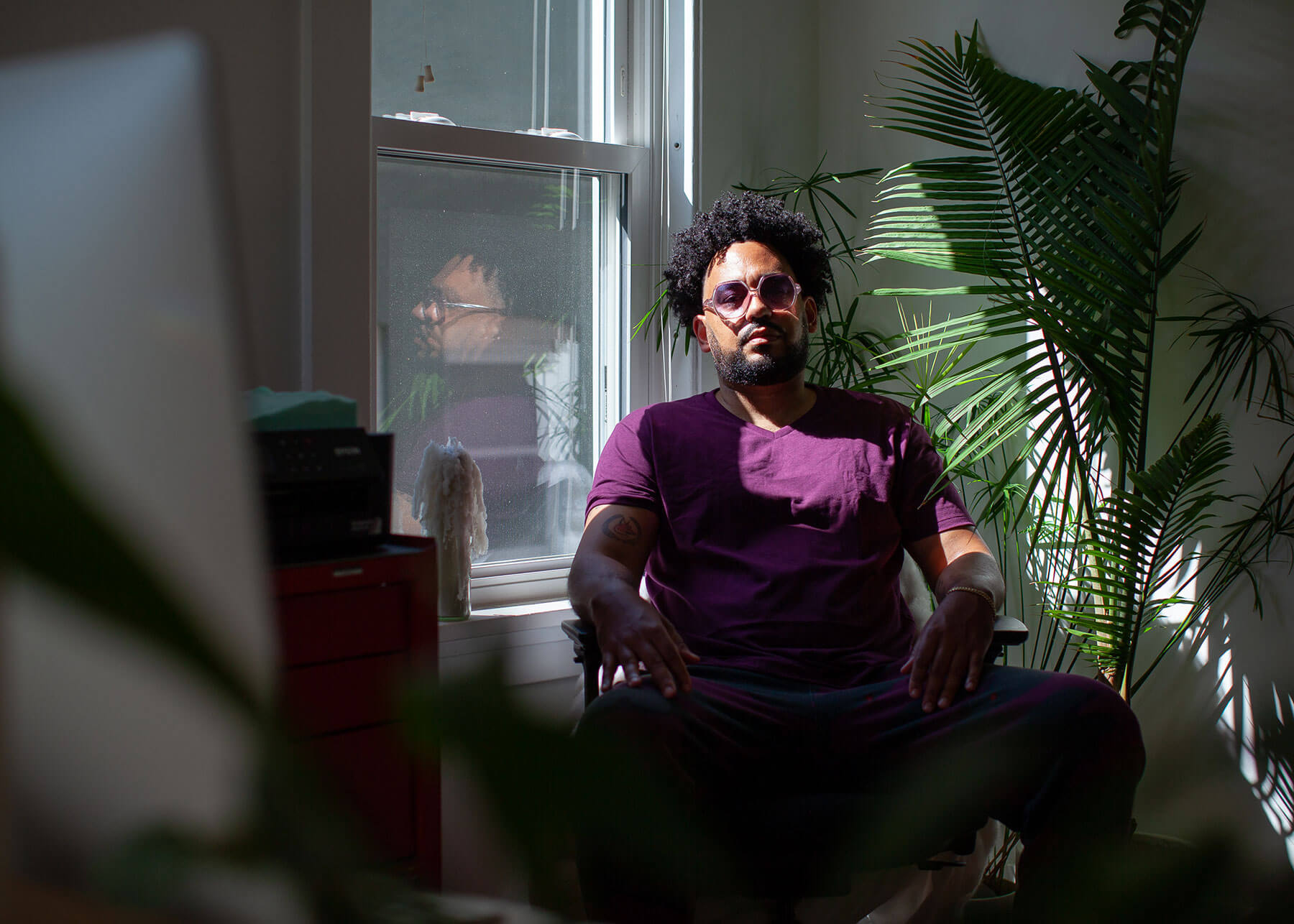
Jason England, an assistant creative writing professor at Carnegie Mellon University, has urged universities to do more in the face of racial injustice. (Photo by Quinn Glabicki/PublicSource)
Scheines said the article provided thought-provoking questions on how universities discuss racism and why those responses can be ineffective.
“We need to find ways to act effectively to improve our own communities — and it needs to be a priority,” Scheines said. “On that we agree.”
After the essay was published, the college invited the authors to contribute to committees in an effort to address concerns of racism and increase equity. England now advises the department’s dean, and Purcell co-chairs the diversity, equity and inclusion efforts at the department.
CMU has made some progress. In January, the university announced Wanda Heading-Grant as vice provost for diversity, equity and inclusion and chief diversity officer.
Since the summer, the Dietrich College of Humanities and Social Sciences worked on initiatives like hosting town halls and other meetings to talk about inequality and racism, hiring a cluster of new faculty from underrepresented backgrounds and creating new fellowships to diversify the graduate program, starting with a cohort of 10 students.
But looking back over the year, Purcell said more needs to be done.
He believes the language used by the university still lacks specificity and courage when addressing issues of white supremacy and anti-Blackness. For instance, he can talk openly in his classes about historical concepts like abolitionism, which began with Black men and women resisting enslavement and has evolved more recently to encompass calls to end incarceration and law enforcement.
But for a university, Purcell questions if they could use the more direct language without creating a PR crisis.
“My job is to pursue knowledge. I think a university’s job is to attract students — it’s a business,” he said. “There’s a desire to engage in these conversations, but always in a safe way.”
England cautions universities to not just rely on what he considers “the script” — canned language meant to make people feel more welcome, like university-wide emails with terminology like BIPOC [Black, Indigenous and people of color] or discussing trigger warnings. Though these terms can be useful, England questioned if it really creates fundamental change.
“That’s what frustrates me because I don’t care if you call me a BIPOC or a person of color or whatever else,” he said. “It doesn’t get more Black people on campus, and it doesn’t make them feel safer when they have to walk the streets of Pittsburgh and worry about racism or police or whatever their concerns might be.
“We can’t change the world through ever-shifting terminology that continues to say the same thing in a different way,” he said.
In a meeting with other faculty, students and Duquesne University administrators, Quincy Stephenson heard a Black student share how he did not know how to process the pain without a space on campus to let out his feelings and emotions.
Stephenson, the assistant director and outreach coordinator at the university wellness center, decided to create such a meeting space with a wellness organization called The Village.
There, Black students could learn how to heal, how to handle trauma and stress and how to be unapologetically themselves.
The group began last summer, and Stephenson said on average three to four students will sign on to informally talk and share their feelings, especially when another tragedy happens. In light of the guilty verdict of Derek Chauvin for murdering George Floyd, Stephenson emphasized that Black students should be intentional in how exposed they are to the news.

Quincy Stephenson is assistant director and outreach coordinator at Duquesne University’s Counseling and Wellbeing Center. (Photo by Ryan Loew/PublicSource)
To avoid exposure to traumatic Black suffering, Stephenson said he did not tune in to broadcast news about the trial but instead caught up by reading an article or two.
When he heard the jury’s decision, he felt the weight of the guilty verdict. Only days before, a police officer killed a Black man just miles from the courthouse.
Stephenson did not just see Daunte Wright. He saw his own students. So he reminded his students that it was OK to take a step back and to not necessarily tune in to every update on the trial or attend another protest. It’s difficult to fight and heal at the same time.
“We’ve been doing it for so long that it’s just normal behavior,” he said. “When somebody cuts you, you typically take time to allow the wound to heal. But because we’ve been going for so long, we’ve become accustomed to fighting and trying to heal at the same time.”
This past year has been emotionally taxing for many. But despite the burden, Black students kept speaking up.
LemLem Gamble, a junior at Washington & Jefferson College, is used to having tough conversations as a way to offer more perspective for others, she said. At her school, there aren’t many other Black students.
When Gamble got a text from her lacrosse coach checking in on her at the beginning of the summer, she saw an opportunity to talk to her team and make a more meaningful difference on a personal level.
“Living those experiences can literally be trauma,” she said. “Every time I sit down with someone and talk about something I’m reliving that trauma for them because I think it’s worth it for me to be sad for like 30 minutes if that affects their entire worldview.”
Because there are not many other students of color on campus, Gamble said she has to water down her own experiences to better reach white people. Even so, she talked about the consequences of racism, resources and ways for her team to be good allies.
Lisha White, a doctoral student at Carnegie Mellon, also found herself at the precipice of change.
Along with other student leaders, White wrote a letter to the university president calling for action like the hiring of more diverse faculty and ending the university’s relationships with local police.
While leading the Black Graduate Student Organization, White still had her research duties and had to balance high expectations at the university and push for change.
“I’m not going to lie, it was not easy,” she said.
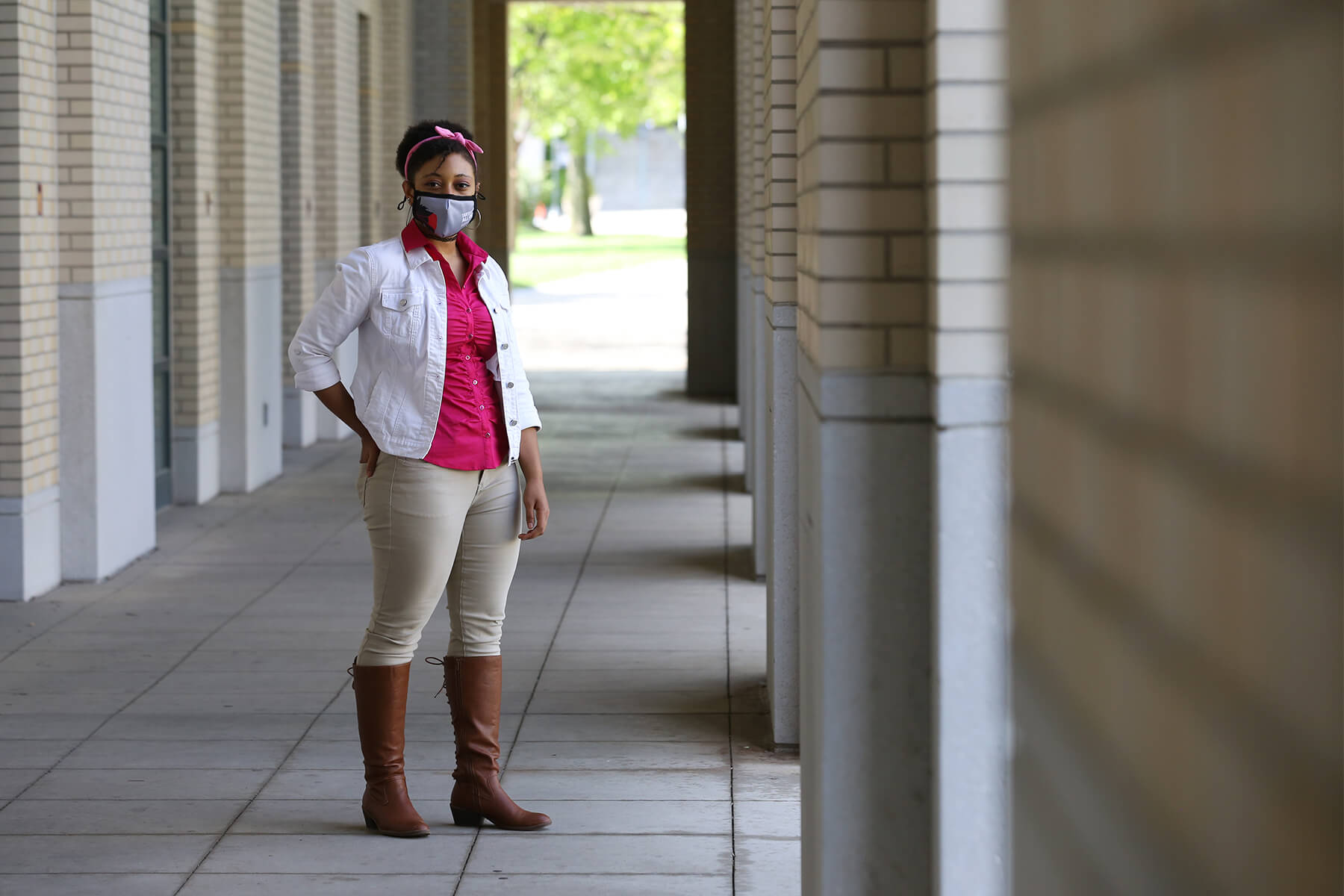
Lisha White, a doctoral student at Carnegie Mellon University, has had to balance high academic expectations and her work pushing for change on campus. (Photo by Ryan Loew/PublicSource)
The executive board of the grad student organization helped keep members up to date on everything happening. But still, White was the representative to attend meetings with faculty, the provost and the university president. She felt pressure to speak up for all Black graduate students despite preferring to be in the background.
White leaned on the board for support. She considers them family.
“Sometimes it can be difficult to find people that are like-minded and going through the same struggle that also look like you,” she said.
For the majority of her fall semester at Pitt, Ottley researched her senior thesis, worked for hours at a university lab each week, then would head back to her apartment to jump on a Zoom call and share her experience as a Black student with other students, administrators or faculty who wanted to talk — all with little energy to spare.
Now that she has graduated, Ottley wonders how she even got through the year.
“There were days when I just wanted to exist,” she said. “I just wanted to just be a human, without having to explain to someone what I was going through or without having to be in a meeting with someone asking me, ‘OK, so what’s your experience been like?’”
At times she could feel herself growing upset — an urge to tell others to just read the many published stories that quoted her instead of making her repeat her experiences at the university.
She leaned on her friends, other Black students who call themselves Black Pitt, to get through the tough days.
Part of it was also understanding that she was no longer speaking about her own life, instead offering university leadership, faculty and other students a glimpse into what it is like to be a Black student.
She asked herself: “If I don’t speak, then who will?”
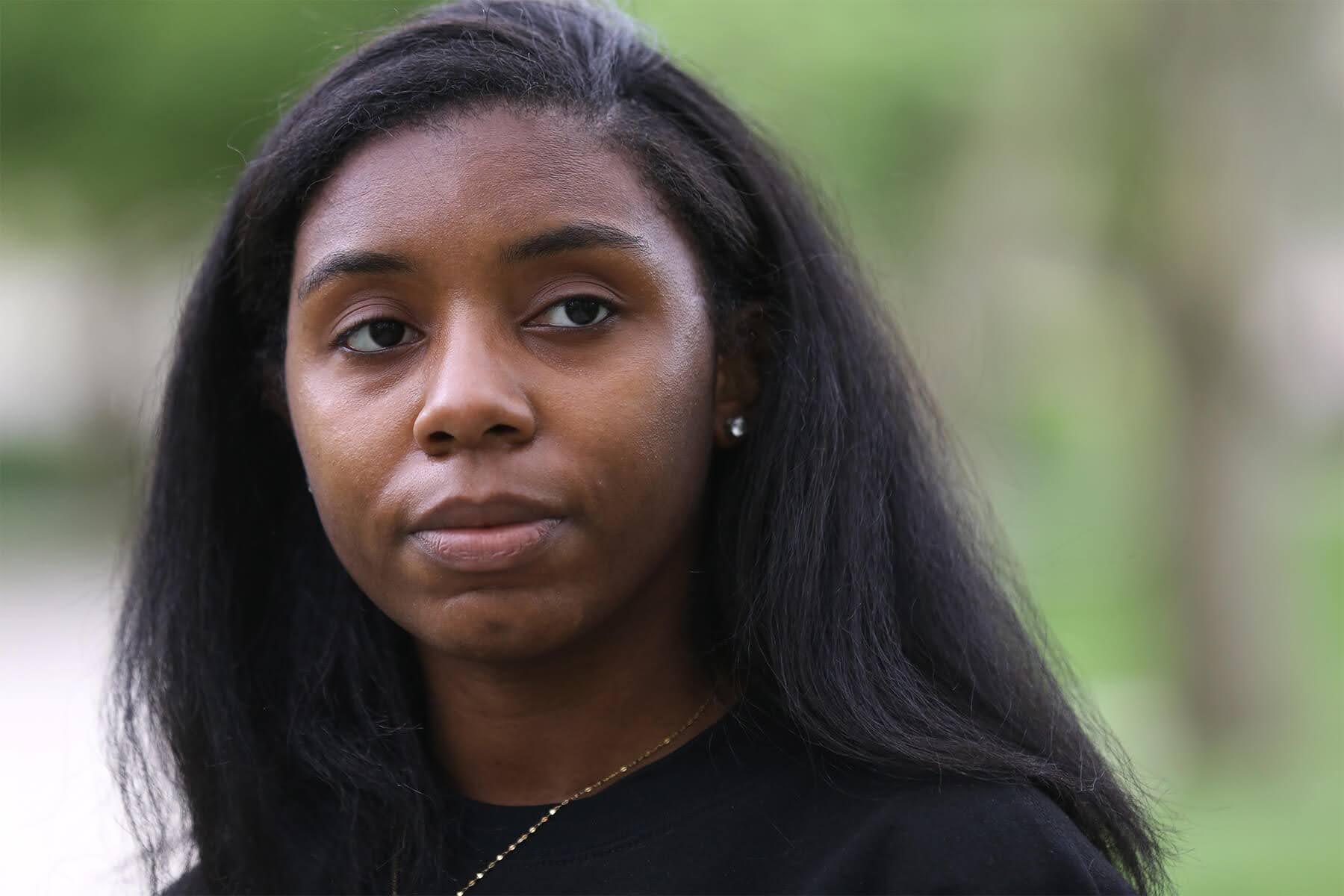
Following George Floyd's murder, recent University of Pittsburgh graduate Morgan Ottley met with university leadership to bring about a list of demands for change. (Photo by Ryan Loew/PublicSource)
To help cope, Ottley relied on her relationships as people in her life reminded her to think about who she was doing all this work for and what it could be like for future Black students.
She wants to see a campus where Black students are not only comfortable and safe but also feel acknowledged and happy.
After presenting her thesis, graduating with awards and speaking at her commencement ceremony, Ottley realized she made it through college and brought about change there.
“I know that my college career has been a struggle to say the least,” she said, “and so to kind of have that moment to be like, you persevered, you came out on the upper hand — you finished.
“You finished, and you finished strong.”
Naomi Harris covers higher education at PublicSource, in partnership with Open Campus. She can be reached at naomi@publicsource.org.
This story was fact-checked by Matt Maielli.